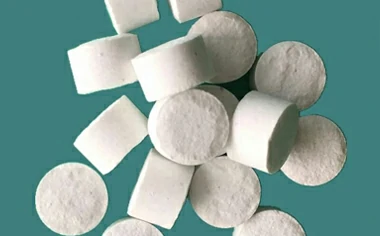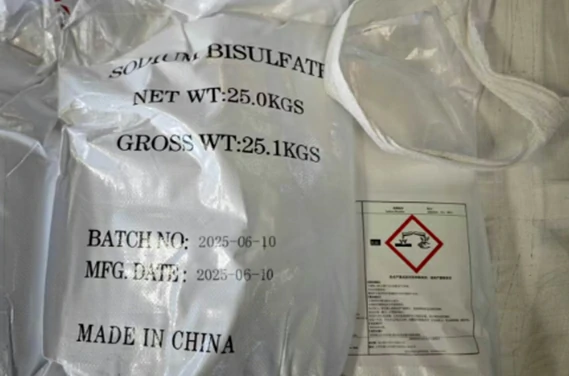Sodium chlorite is a chemical compound often used as a precursor for the generation of chlorine dioxide, a powerful disinfectant. Sodium chlorite itself isn't directly used to disinfect water. Instead, it's combined with an acid, typically hydrochloric acid, to produce chlorine dioxide. It is a potent disinfectant that effectively kills a wide range of microorganisms, including bacteria, viruses, and protozoa. Here are a few reasons why sodium chlorite is used for water purification:
Disinfection: Chlorine dioxide is a powerful disinfectant that can effectively kill a wide range of microorganisms. It also is a highly effective biocide that can destroy bacteria, viruses, and other harmful pathogens.
Broad-spectrum activity: Chlorine dioxide has a broad-spectrum antimicrobial activity, meaning it can target and eliminate a wide range of microorganisms. This makes it suitable for treating various types of water sources, including drinking water, swimming pools, and wastewater.
Stability: Sodium chlorite is relatively stable and can be stored for extended periods without losing its effectiveness. It can be stored in a dry, cool place, away from direct sunlight, and still maintain its disinfection properties.
Residual effect: Chlorine dioxide can leave a residual effect in treated water, meaning it continues to provide protection against microbial growth even after the initial treatment. This residual effect helps to prevent recontamination during storage and distribution.
Ease of use: Sodium chlorite is available in various forms, including powders, and solutions, making it convenient and easy to use for water treatment. It can be easily added to water systems or incorporated into water treatment processes.

Benefits of using sodium chlorite for water purification:
Sodium chlorite is primarily used in water purification as a precursor to generate chlorine dioxide. Chlorine dioxide is a potent disinfectant with several advantages over traditional chlorine:
Effectiveness Against a Broad Spectrum of Contaminants
Bacteria: Chlorine dioxide effectively eliminates a wide range of bacteria, including those resistant to chlorine.
Viruses: It's effective against many types of viruses, including those responsible for waterborne diseases.
Protozoa: Chlorine dioxide can also inactivate protozoa, such as Cryptosporidium and Giardia, which are resistant to chlorine.
Cysts: It can effectively penetrate the protective walls of cysts, killing the organism inside.
Taste and Odor Control
Chlorine dioxide is effective in removing unpleasant tastes and odors caused by organic compounds in water.
Reduced Formation of Disinfection Byproducts
Compared to chlorine, chlorine dioxide produces fewer disinfection byproducts (DBPs), which are harmful compounds formed during the disinfection process.
Lower Cost
It can be generated on-site, which reduces the need for transportation and storage of hazardous chemicals and relatively inexpensive.

Applications in Water Purification
1. Municipal Drinking Water Treatment
Disinfection: Chlorine dioxide is used to disinfect drinking water. It is highly effective against bacteria, viruses, and protozoa, including those that form cysts, like Giardia and Cryptosporidium, which are resistant to chlorine.
Taste and Odor Control: It helps in removing unpleasant tastes and odors, often caused by algae, decaying vegetation, and certain industrial processes, without leaving a residual taste of its own.
Precursor Control: Chlorine dioxide reduces the formation of disinfection by-products such as trihalomethanes (THMs) and haloacetic acids (HAAs) by selectively oxidizing organic compounds in the water.
2. Industrial Water Treatment
Cooling Towers: It is used in cooling towers to control biofilm, algae, and scale. This helps in preventing the growth of Legionella bacteria, which can cause Legionnaires' disease.
Process Water: Industries that require high-purity water, such as pharmaceuticals, electronics manufacturing, and food processing, use chlorine dioxide to treat water used in their processes. It ensures the water is free from microorganisms and organic contaminants.
3. Wastewater Treatment
Effluent Disinfection: Chlorine dioxide is used in wastewater treatment facilities to disinfect effluent before it is released into natural water bodies. This helps in meeting environmental discharge regulations.
Odor Control: It is effective in controlling odors at wastewater treatment plants, particularly those related to hydrogen sulfide (H2S), a common and problematic odor source.
4. Medical Facilities
Water Systems: Hospitals and other healthcare facilities use chlorine dioxide to disinfect water systems, especially to control Legionella in hot water systems where temperatures might not be high enough to kill bacteria effectively.
5. Aquaculture
Water Quality Management: In aquaculture, chlorine dioxide is used to treat water to prevent the spread of disease among fish and other aquatic organisms. It helps in controlling algae, bacteria, and harmful pathogens in the water.
6. Emergency Water Treatment
Portable Water Purification: Chlorine dioxide tablets are used for emergency water purification, such as in disaster relief operations, by military forces, or in remote areas. These tablets are effective against a wide range of pathogens and are easy to transport and use.

Safety and Handling
While sodium chlorite and chlorine dioxide are effective, they must be handled with care. Sodium chlorite is a strong oxidizer and poses health and safety risks if not managed properly. Chlorine dioxide is a potent gas that can be hazardous if concentrations are too high. Proper storage, handling, and application systems are essential to ensure safety and effectiveness.
Regulatory Compliance
The use of sodium chlorite and chlorine dioxide in water treatment is subject to regulatory approval and must comply with safety standards set by local and international health agencies. It's important for facilities using these chemicals to adhere strictly to these regulations to ensure public safety.
In summary, sodium chlorite is used in water purification primarily as a precursor to generate chlorine dioxide, offering an effective and safer alternative to chlorine in many applications. Its ability to control a wide range of pathogens while minimizing harmful by-products makes it a valuable choice in modern water treatment practices.



